SkinnyB
Established Member
I have some larger items to de rust at some point. So I am either going to need a large container and gallons of evapo-rust or use the recommend method of using paper towels covered in the rust remover. I had the idea of placing the part in a vacuum bag then sucking out the air, filling with evapo-rust and trying that. Not sure if its been done before or if it was going to work but was a new idea for me! This is how I got on:
Thought I would try some smaller but still on the large side parts first. My idea is to use a vacuum bag which seals around the part. This will then be my container and use a lot less liquid than trying to find a container to fill up.
I didn't have any 'proper' vacuum bags so I improvised with some plastic bags and pipe. I would recommend getting the correct size vacuum bags for your parts. Bin bags were not ideal and had a few holes in.
My first try was also to use paper towels as well as a bag. Although it did work in some areas... A few points:
All the paper needs to be saturated and be pressed against the surface.
I had a few less saturated spots which actually meant the rust stuck to the paper towel and was left on the part. It needed a firm chisel to remove it.
Clean up is a lot messier.
Lots of rusty paper towels stuck to the metal.
Retrieval of liquid is a pain
All the evapo-rust I want to reuse is in the paper towel. Id have to squeeze it all off
paper towel
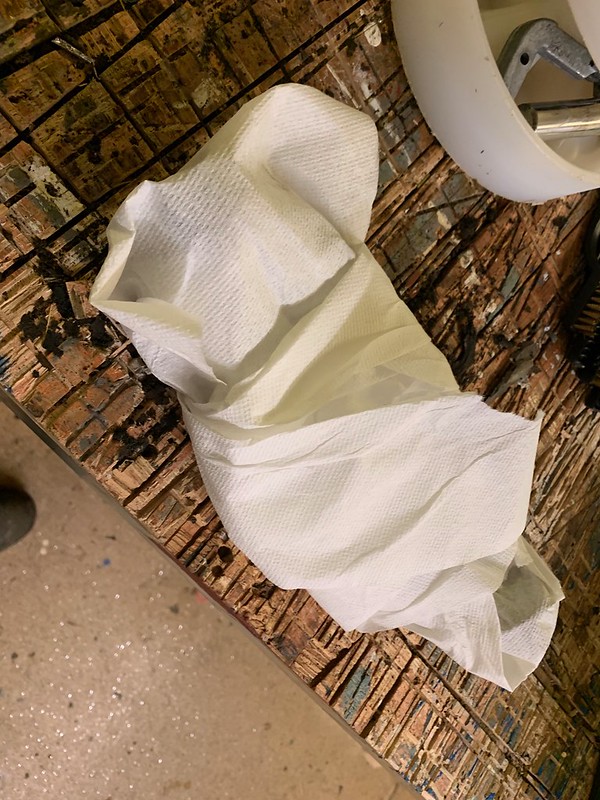 IMG_6255 by jamie skinner, on Flickr
IMG_6255 by jamie skinner, on Flickr
Bag and evaporust poured in
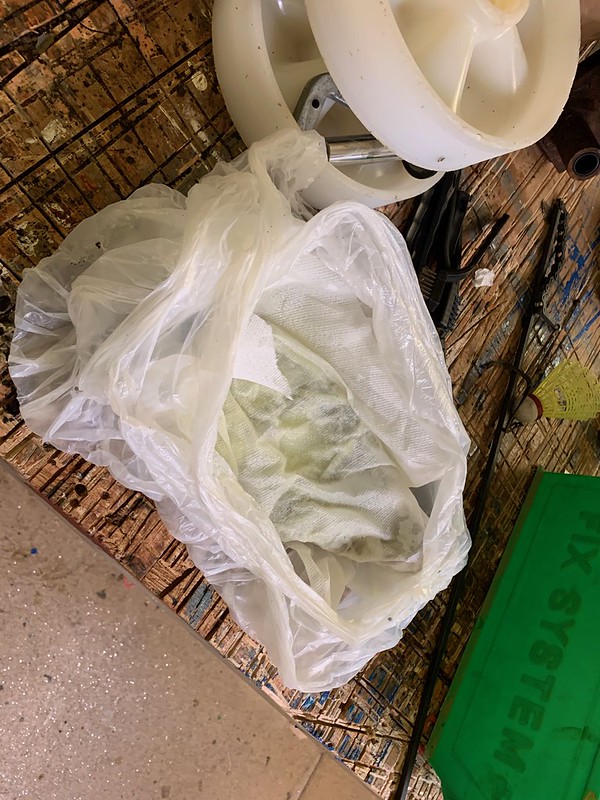 IMG_6257 by jamie skinner, on Flickr
IMG_6257 by jamie skinner, on Flickr
Vacuumed the air out.
 IMG_6258 by jamie skinner, on Flickr
IMG_6258 by jamie skinner, on Flickr
Part after a few days, as you can see some areas worked some did not where there wasn't enough liquid.
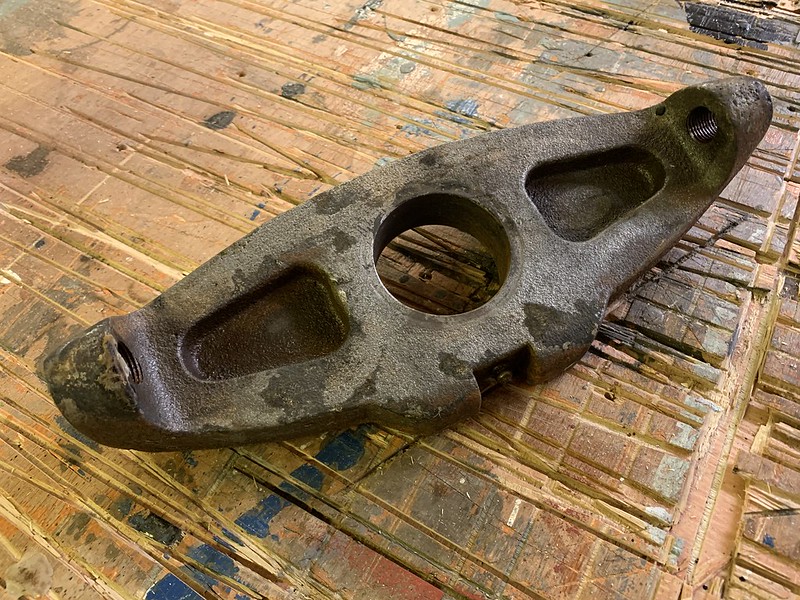 IMG_6286 by jamie skinner, on Flickr
IMG_6286 by jamie skinner, on Flickr
Second attempt and things I changed:
Swapped to heavier duty bags
Used a pvc pipe to suck air out of and pour in evapo-rust.
Elastic bands to hold plastic once vacuumed.
No paper towel
Placed in a box just in case it leaked.
1 Place part in bag.
2 Suck air out
3 Elastic bands
4 Suck a little more air out
5 Pour in evapo-rust until bag is full to the top.
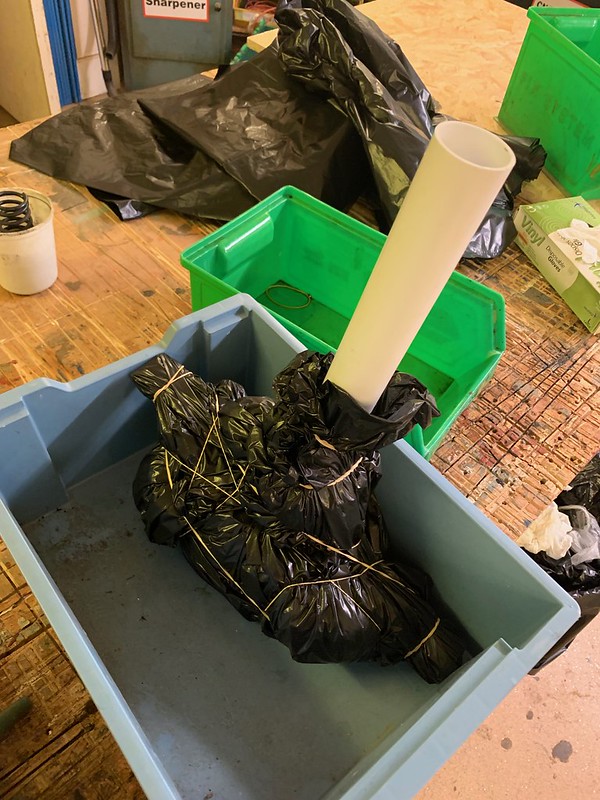 IMG_6302 by jamie skinner, on Flickr
IMG_6302 by jamie skinner, on Flickr
After 24 hours I opened it up and seemed to have gone well.
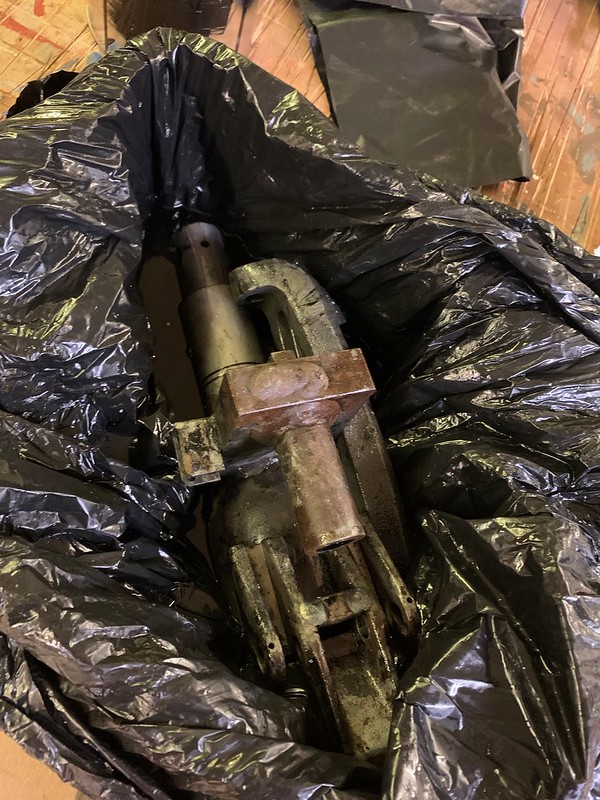 IMG_6311 by jamie skinner, on Flickr
IMG_6311 by jamie skinner, on Flickr
I am pleased to say this worked very well. But I would recommend on some vacuum bags instead of bin liners...
Picture is just before painting, cleaned up with a wire brush and cleaning products.
Will have to try this on the big parts now!
Overall:
Very easy to retrieve the liquid after.
Used a lot less of the solution.
Meant I didn't have to buy lots of solution just to cover the parts. (I know you can do one side then flip the part over if you don't have enough. Didn't fancy it though.)
Great for awkward shaped parts
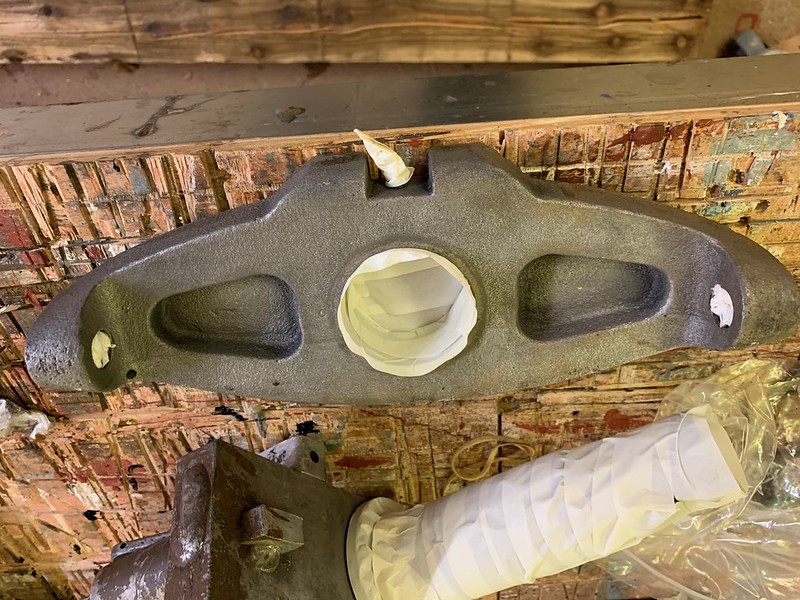 IMG_6314 by jamie skinner, on Flickr
IMG_6314 by jamie skinner, on Flickr
Here was the other part I was also doing.
Unfortunately the bag leaked a bit so didn't get the very top part. Worked on the rest very well though.
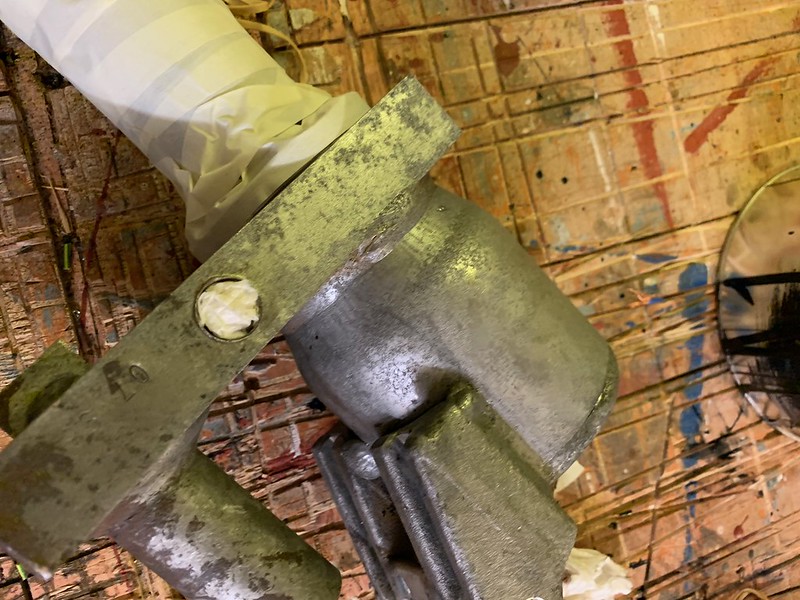 IMG_6313 by jamie skinner, on Flickr
IMG_6313 by jamie skinner, on Flickr
Thought I would try some smaller but still on the large side parts first. My idea is to use a vacuum bag which seals around the part. This will then be my container and use a lot less liquid than trying to find a container to fill up.
I didn't have any 'proper' vacuum bags so I improvised with some plastic bags and pipe. I would recommend getting the correct size vacuum bags for your parts. Bin bags were not ideal and had a few holes in.
My first try was also to use paper towels as well as a bag. Although it did work in some areas... A few points:
All the paper needs to be saturated and be pressed against the surface.
I had a few less saturated spots which actually meant the rust stuck to the paper towel and was left on the part. It needed a firm chisel to remove it.
Clean up is a lot messier.
Lots of rusty paper towels stuck to the metal.
Retrieval of liquid is a pain
All the evapo-rust I want to reuse is in the paper towel. Id have to squeeze it all off
paper towel
 IMG_6255 by jamie skinner, on Flickr
IMG_6255 by jamie skinner, on FlickrBag and evaporust poured in
 IMG_6257 by jamie skinner, on Flickr
IMG_6257 by jamie skinner, on FlickrVacuumed the air out.
 IMG_6258 by jamie skinner, on Flickr
IMG_6258 by jamie skinner, on FlickrPart after a few days, as you can see some areas worked some did not where there wasn't enough liquid.
 IMG_6286 by jamie skinner, on Flickr
IMG_6286 by jamie skinner, on FlickrSecond attempt and things I changed:
Swapped to heavier duty bags
Used a pvc pipe to suck air out of and pour in evapo-rust.
Elastic bands to hold plastic once vacuumed.
No paper towel
Placed in a box just in case it leaked.
1 Place part in bag.
2 Suck air out
3 Elastic bands
4 Suck a little more air out
5 Pour in evapo-rust until bag is full to the top.
 IMG_6302 by jamie skinner, on Flickr
IMG_6302 by jamie skinner, on FlickrAfter 24 hours I opened it up and seemed to have gone well.
 IMG_6311 by jamie skinner, on Flickr
IMG_6311 by jamie skinner, on FlickrI am pleased to say this worked very well. But I would recommend on some vacuum bags instead of bin liners...
Picture is just before painting, cleaned up with a wire brush and cleaning products.
Will have to try this on the big parts now!
Overall:
Very easy to retrieve the liquid after.
Used a lot less of the solution.
Meant I didn't have to buy lots of solution just to cover the parts. (I know you can do one side then flip the part over if you don't have enough. Didn't fancy it though.)
Great for awkward shaped parts
 IMG_6314 by jamie skinner, on Flickr
IMG_6314 by jamie skinner, on FlickrHere was the other part I was also doing.
Unfortunately the bag leaked a bit so didn't get the very top part. Worked on the rest very well though.
 IMG_6313 by jamie skinner, on Flickr
IMG_6313 by jamie skinner, on Flickr


